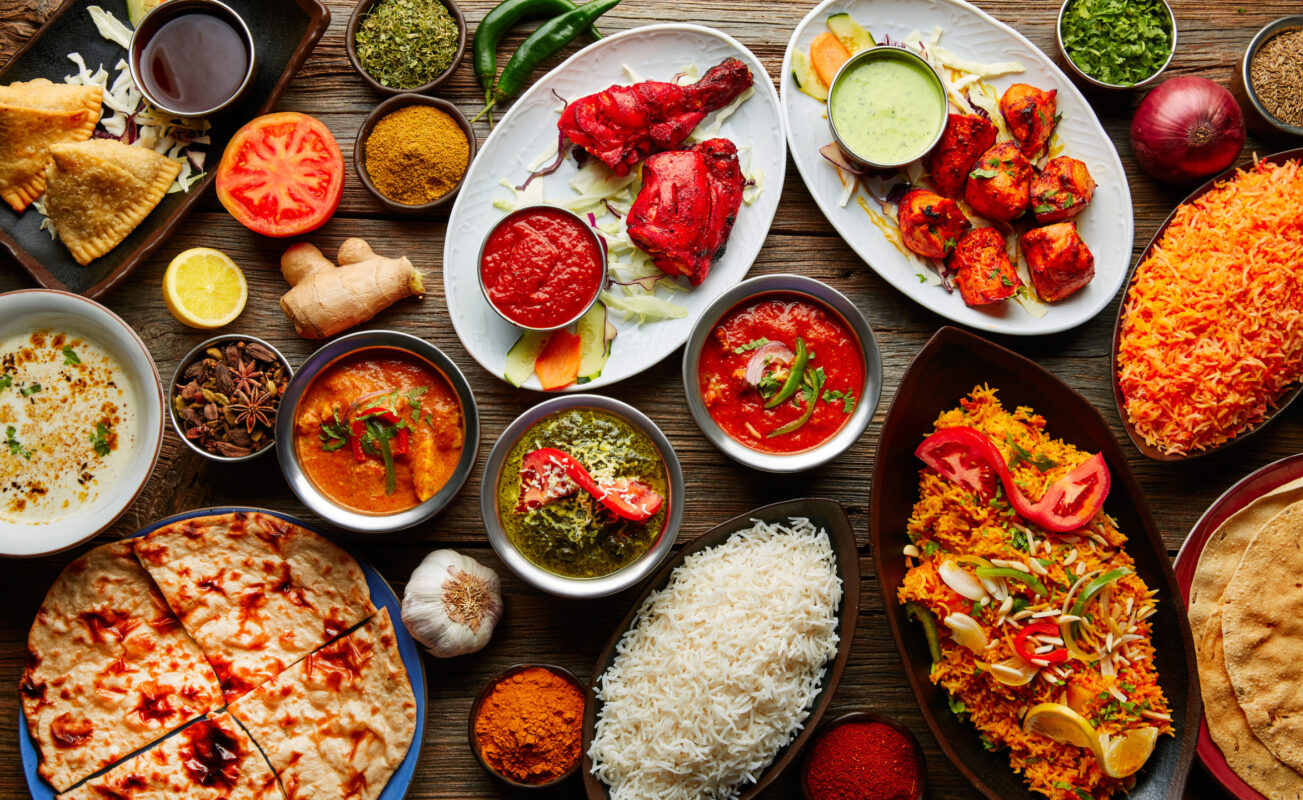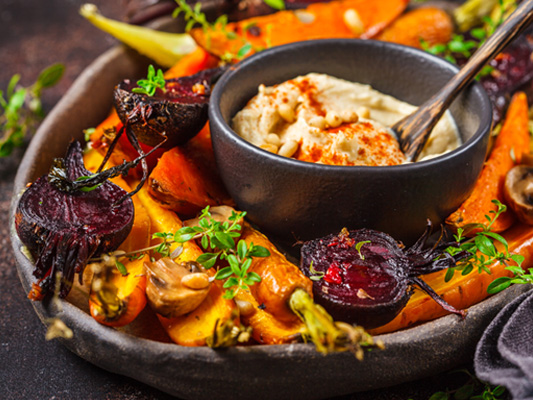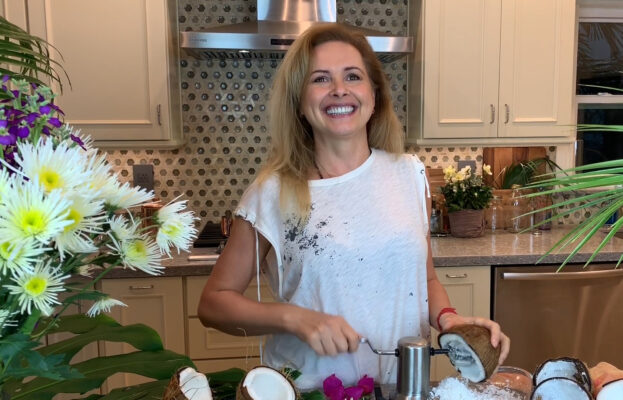There I was, in front of my computer, completely absorbed in a project, when suddenly, it happened – that all too familiar rumble in my stomach. I glanced at the clock, realizing it had been hours since my last meal. As the growling got louder, my thoughts drifted toward my favorite comfort food. I’m sure you’ve experienced this too, right? Stomach hunger seems to have a knack for grabbing our attention when we least expect it. But have you ever wondered what’s really happening behind the scenes, what’s really going on inside your body? Let’s take a look at the realm of stomach hunger and appetite awareness and try to decode our body’s mysterious signals.

Beyond the Grumble: Understanding Stomach Hunger and Appetite Awareness
From an evolutionary standpoint, it’s a good thing that we find hunger pangs uncomfortable. If we didn’t, we might just starve to death! These sensations are like a built-in alarm system, motivating us to seek nourishment and keep our bodies running smoothly.
While other types of hunger (like mouth hunger, tactile hunger, visual hunger, sonic hunger, nose hunger, etc.) are based on sensory experiences, desire to eat for pleasure, taste, or social reasons, stomach hunger is the body’s way of signaling that it requires fuel to function (1). Stomach hunger is a physiological need. When our stomach is empty, the walls of our stomach contract, creating a sensation of hunger. This physical sensation is then relayed to our brain, which sends out the signal for us to eat (2).
Your stomach doesn’t call all the shots when it comes to eating. In many regards, your eating habits train your stomach when to expect food. If you consistently eat three meals a day, your stomach will anticipate nourishment at those times and grumble if you deviate from the plan.
Ever wondered what happens to stomach hunger during a fast? After about three days, hunger pangs and grumbling subside, leaving your stomach feeling calm and content. This just goes to show that stomach hunger isn’t a never-ending tyrant – it can be tamed! Ignoring hunger signals can lead to problems, so it’s crucial to find a balance between appeasing your stomach and nourishing your body. This involves staying calm when your stomach rumbles, but you can’t eat right away and not ignoring your body’s need for high-quality nourishment.
Now, here’s a question to ponder: Can your stomach actually taste the food you eat? You might imagine it relishing a delicious slice of pie or savoring a mouth-watering burger, but in reality, your stomach doesn’t have a clue about flavors. Yep, that’s right! Your stomach lacks taste buds, so it can’t tell the difference between a gourmet feast and a plain ol’ bowl of oatmeal.
All those delightful tastes and textures that our mouths enjoy? They vanish once swallowed, transforming into a uniform mush. Your stomach couldn’t care less about the flavors; it’s more focused on volume and how much it can stretch. Picture it like a balloon filling up with air – when it’s overfilled and stretched beyond capacity, it lets us know with discomfort or even pain. And if it’s expecting food and doesn’t get any, it’s not shy about voicing its displeasure growling, and making all kinds of noises.

Tuning Into Your Gut: How Your Unique Microbiome Influences Appetite
Have you ever thought about how your gut actually talks to you? Some people are often surprised to find out that their unique gut microbiome plays a huge role in how they feel hunger. So let’s take a look at our individual gut buddies and see how they help us better understand their language and the hunger cues that come from the depth of your gut.
You know, when we talk about our gut and its connection to the feeling of hunger and our appetite, it’s impossible not to mention the gut microbiome. It’s this incredible world within each of us, teeming with trillions of bacteria, fungi, viruses, and other microorganisms, all working together in a delicate balance to keep us healthy. In fact, these tiny organisms play a crucial role in breaking down and digesting the food we eat, producing essential vitamins and nutrients, and even supporting our immune system.
What’s really amazing is that no two people have the same gut microbiome – just like our fingerprints, our gut microbial community is unique to each of us. This distinctiveness starts from the moment we’re born and keeps evolving throughout our lives, influenced by factors like our genetics, environment, and, of course, our diets. Early exposures, such as the mode of delivery (vaginal birth or C-section), breastfeeding, and the environment in which we grow up, all contribute to the initial development of our gut microbial community.
Now, you might be wondering, “Why does this matter?” Well, because our individual microbiomes play a massive role in how we respond to different foods and nutrients. Something that works wonders for one person might not have the same effect on someone else simply due to the differences in their gut microbes. That’s why a one-size-fits-all approach to nutrition rarely works, and it’s crucial to listen to our bodies and adapt our diets to best suit our individual needs.

So, how can we take care of our unique gut microbiome and satisfy our stomach hunger in a healthy way? It all comes down to the food choices we make. Eating a wide variety of wholesome, unprocessed, fiber-rich foods is a great way to start. These foods act as “prebiotics,” providing essential fuel for the beneficial bacteria in our gut.
But we can’t forget about “probiotics” either. These live microorganisms, found in fermented foods like yogurt, kefir, sauerkraut, kimchi, and kombucha, help improve the balance of our gut microbiome when consumed in adequate amounts. Including both prebiotic and probiotic sources in our diet helps create a diverse and flourishing gut microbiome.
You see, a well-balanced gut microbiome can lead to better appetite awareness and a more satisfying relationship with food. When our gut is healthy, it’s better equipped to send accurate hunger and fullness signals, making it easier for us to make mindful food choices. Plus, a diverse gut microbiome has been linked to reduced cravings for unhealthy foods, which definitely makes sticking to a nutrient-dense, wholesome diet a lot more achievable.
In addition to food choices, our lifestyle habits also play a significant role in shaping our gut microbiome. Factors like stress, sleep, exercise, and even our social interactions can have a profound impact on the balance and diversity of our gut microbes.
So, to sum it up, our gut microbiomes are as unique as we are, and this individuality plays a huge role in our overall health and well-being. By being mindful of our food choices, maintaining a balanced lifestyle, and embracing the uniqueness of our gut microbiome, we can nurture a healthy, thriving microbial community that supports our journey toward optimal health. And honestly, that’s something worth celebrating, don’t you think?

When Stomach Rumbles Speak: Distinguishing Hunger from Anxiety
You see when you’re working against the clock to meet a deadline, and suddenly, your stomach starts grumbling like it’s trying to have a full-on conversation with you, you might think it’s hunger knocking on your door, but actually, it could very well be anxiety playing tricks on you.
Anxiety has a sneaky way of stirring up stomach rumbling or churning. And if you misinterpret this stomach symphony as hunger, you may find yourself eating in an attempt to silence the growling. Unfortunately, this approach can set off a harmful cycle.
Here’s how it goes: anxiety grips you, your stomach signals distress (which you mistake for hunger), and you end up overeating. This binge triggers even more anxiety about the unnecessary food you just consumed, causing your stomach to become even more unsettled. And then, in the hope of finding relief, you eat again—only to be swamped with feelings of guilt and shame that heighten your emotional distress and keep the vicious cycle spinning.
Does this sound familiar? I’ve definitely fallen into this trap when I’m under pressure. Stress pushes me to seek comfort in food. My preoccupation with work means I don’t truly enjoy these treats, leaving me with a stomach full of junk and a clouded mind. This only amplifies my tension, leading to further stomach issues and a continued reliance on food.
So, what’s the solution? It’s time to take a step back and give your body the attention it deserves. Assess your hunger levels by checking in with your eyes, mouth, and stomach. Recognize the role your stomach plays in signaling anxiety, and show some gratitude for its message. Try addressing your real needs, whether that means taking a brief mental break, sipping a leisurely cup of tea, or even sneaking in a short nap. You could also step outside for a few moments, soaking up nature’s vibrant colors to nourish your senses.
By giving yourself the care you need, you can return to your tasks feeling refreshed and successfully break the cycle of trying to soothe your mental distress with food.

Our emotions can sometimes masquerade as physical hunger, so let’s quickly address how to tell the difference between emotional and stomach hunger:
- Emotional hunger comes on suddenly, while stomach hunger tends to build gradually.
- Emotional hunger craves specific comfort foods, whereas stomach hunger is open to a variety of options.
- Emotional hunger can’t wait – it demands instant gratification. Stomach hunger, on the other hand, can wait a bit longer.
- Emotional hunger doesn’t stop when you’re full, leading to overeating, while stomach hunger stops when you’re satisfied.

Many people have been misinterpreting their stomach’s cues all this time. They often struggle to understand their stomach’s sensations and can’t tell if they’re full, partially full, or still hungry. But once they learn the art of “listening” to their stomachs, it becomes a real turning point in their lives. They become aware of when their stomach is empty and different stages of fullness. So instead of automatically reaching for more food, they hit the pause button and wait a bit before deciding if they need more. It’s a fantastic feeling when they finally sync up with their stomach’s cues and develop a healthier relationship with food!
And science is backing this up as well! Researchers have found that the digestive system is like a “second brain”, filled with nerves that communicate with our heads upstairs. This fascinating discovery is due to the vast network of nerves found in our gut, known as the enteric nervous system (ENS). The ENS contains around 100 million neurons—more than our spinal cord!—and communicates with our primary brain through the gut-brain axis (3,4).
The Japanese have long appreciated this deep connection between our minds and our stomachs, coining the term “haragei,” which translates to “stomach wisdom.” This ancient wisdom emphasizes the importance of trusting and listening to the insights our gut provides, as it often holds the key to our physical and emotional well-being.

Gut Instincts: The Japanese Art of Haragei and Holistic Well-being
The Japanese concept of “haragei” (腹芸) is a testament to their profound understanding of the intricate relationship between the mind and the gut. Rooted in centuries of tradition and wisdom, haragei highlights the significance of acknowledging and valuing the insights that our gut offers, as it is closely linked to our overall well-being, both physically and emotionally.
Haragei, which can be literally translated as “stomach wisdom” or “belly art,” is derived from two Japanese words: “hara” (腹), meaning stomach or abdomen, and “gei” (芸), meaning art or skill. This term encompasses not only the physiological aspects of gut health but also the intuitive, emotional, and social dimensions of human experience.
The physiological aspect of haragei is rooted in the understanding that our gut is home to trillions of microorganisms known as the gut microbiome. These microorganisms play a crucial role in maintaining our physical health, influencing digestion, immune function, and even the production of essential vitamins and neurotransmitters. The gut is often referred to as the “second brain” because of all the neurons it has and its ability to make neurotransmitters like serotonin, which helps regulate our mood.
The intuitive dimension of haragei is based on the idea that our gut instincts can guide us in making decisions and navigating complex situations. This form of inner wisdom relies on listening to our bodies and trusting the signals they provide, which can often lead to more authentic and effective decision-making.
In the emotional realm, haragei recognizes that our gut can be a barometer for our emotional state. When we experience stress, anxiety, or other negative emotions, our gut can react by manifesting physical symptoms such as indigestion, stomachaches, or other digestive issues. By paying attention to these signals, we can gain a better understanding of our emotional well-being and take steps to address any underlying issues.
And there’s a social component to haragei as well. It emphasizes the importance of non-verbal communication and the ability to “read the air” (空気を読む, kuuki wo yomu) in interpersonal situations. This skill involves sensing and responding to subtle cues in body language, facial expressions, and tone of voice, allowing individuals to navigate social settings with grace and sensitivity.
In a nutshell, the Japanese concept of haragei reminds us of the deep connection between our minds and our stomachs. It highlights the importance of listening to and trusting our gut instincts. By doing so, we can not only improve our physical health but also enhance our emotional, intuitive, and social well-being.

Reconnecting with Your Stomach’s Wisdom: Mindfulness and Appetite Awareness
Cultivating mindfulness during meals can help you rediscover two superpowers – sensing your stomach’s fullness and knowing just how much food it can comfortably handle. Yep, we were all once little experts at this, but along the way, we got a bit sidetracked.
So, what happened? 🤔 Well, we tend to lose touch with our stomach’s cues for two main reasons. First, we may have developed habits of overeating or self-starvation that consistently ignore our stomach’s signals. Second, we often rely on external sources, like diet gurus, flashy commercials, or the siren call of all-you-can-eat buffets, to guide our food choices. Personally, I’m for getting back in touch with our body’s internal wisdom!
So, how can we become experts in navigating stomach hunger and appetite awareness? Here are some tips to get you started:
- Practice mindful eating – really tune in to your body and pay attention to your stomach’s fullness.
- Reconnect with your body’s internal cues 🎯 – ditch the fad diets and external influences, and trust your body’s wisdom.
- Take it slow and steady 🐢 – give yourself time to adjust to new eating habits and learn to listen to your body’s cues.
By practicing mindful eating, we learn to respect and heed our gut’s insights. We become more attuned to our body’s needs and are better equipped to differentiate between emotional hunger and true stomach hunger. This newfound awareness can lead to healthier eating habits and a more harmonious relationship with food.
But the benefits of tapping into our stomach wisdom don’t stop there. Recent studies have shown that the gut plays a significant role in our mental health, as it produces around 90% of the body’s serotonin—a hormone responsible for regulating our mood, sleep, and appetite. (5). This means that by nurturing our gut and paying attention to its signals, we can also improve our emotional well-being.
Living in harmony with your body and benefiting from its inherent wisdom is a truly rewarding experience.

Attending to Stomach Hunger
So, what truly satisfies our stomach hunger? Well, it’s a mix of the right amount and the right kind of food. When you take a moment to notice when your stomach is happiest, what do you find? Personally, I’ve discovered that my stomach loves to be put to work. It’s not a fan of feeling overstuffed.
You see, when the stomach is overfilled, it just can’t do its job efficiently. Sure, my mouth might enjoy the sensation of being full most of the time, but my stomach begs to differ. It’s all about feeling comfortably full – let’s say around four-fifths full. And you know what else it enjoys? Being empty and taking a well-deserved break now and then.
In a world that often feels chaotic and confusing, even the simple act of choosing what we eat can seem like a monumental task. The onslaught of fad diets, conflicting information, and marketing gimmicks clouds our judgment, leaving us struggling to know what’s truly best for us.
The thing is, there’s no one-size-fits-all solution when it comes to our diet. Our individuality is what makes us uniquely beautiful, and our food choices should honor that. My body’s needs are different from yours, and yours are different from the next person’s. Moreover, our own needs shift from day to day. A nourishing meal after a long, stressful day at work might be entirely different from what I’d desire after a day spent outdoors, soaking up the sun and feeling alive. Our unique genetic makeup, tolerances, and even our gut microbiomes all play a role in determining what fuels us best (6)

Satisfying Stomach Hunger: Making Mindful Food Choices
I’ve come to understand that there’s no magical “superfood” that will solve all our problems. What might be a healthy choice for one person could be detrimental to another. Our unique genetic makeup, tolerances, and even our gut microbiomes all play a role in determining what fuels us best.
But some things are clear. Real, wholesome foods – those that come from the earth, not a laboratory – are what we were meant to eat. Foods we can pronounce, those that haven’t been drenched in pesticides or loaded with hormones and antibiotics. Foods that still resemble, well, food.
I remember hearing someone say they couldn’t afford to eat organic. I get it – I’m not swimming in cash either. But I’d rather have a smaller quantity of fresh, flavorful produce than fill my body with the bland, chemically treated stuff that lines supermarket shelves. The truth is, we can’t afford the long-term consequences of consuming foods that do us more harm than good.
The simple act of preparing a meal at home, with love and intention, using wholesome ingredients, is a beautiful sacred ritual – a gift we can give ourselves and our loved ones. There’s something profoundly nurturing about creating a dish with your own hands, using ingredients that are pure and unadulterated.
And what about having a “healthy relationship with food”? Can we take a moment to consider that? It’s difficult to forge a genuine connection with something that’s devoid of life, like a plastic bag or a rubber band. So why do we fill our bodies with artificial ingredients that provide little more than a façade of nourishment? It’s like trying to sustain ourselves on empty calories, hollow promises, and superficial connections.
The key to making food choices that are right for you is listening to your body. Our gut knows what it needs, but we must give it a chance to communicate with us. We also have to provide it with plenty of options to choose from; otherwise, how would it know what to ask for? Is it fair to treat your body like a dumping ground for chemicals and artificial junk? You deserve better than that.
Let’s fill our plates with wholesome, nourishing foods that make us feel alive and vibrant. Because when we treat our bodies with the love and respect they deserve, we not only nourish ourselves but also cultivate a deeper connection with the world around us. When we make better choices for ourselves, we’re making better choices for the planet, too.
PRACTICES

Mindful Stomach Sensation Exploration
This exercise encourages you to be more in tune with your stomach’s sensations throughout the day, understanding how it signals hunger and fullness, and becoming more aware of its needs.
Start by paying attention to the sensations in your stomach during the day. How does it let you know it’s hungry? Observe any sounds, internal feelings of pressure or movement, warmth or coolness, and other sensations that indicate hunger. While eating, notice the sensations that tell you your stomach is empty, half full, pleasantly full, or overfull.
Be aware of other situations, apart from hunger, that cause stomach discomfort or pangs. What do you think is happening during those moments? Does your stomach signal hunger at specific times? Discover if it signals most intensely before breakfast, at noon, in the afternoon, before dinner, or at bedtime.
When you feel hungry, try postponing eating for a while. Simply observe the sensation you identify as “hunger,” paying attention to body sensations, emotions, and thoughts. Reflect on whether it’s challenging or easy to experience hunger and intentionally delay eating.
Mindful Walking
Go for a gentle, mindful walk when you experience stomach hunger. Pay attention to how your stomach feels as you walk, and notice if the sensation of hunger changes or remains the same. This practice can help you differentiate between true stomach hunger and other sensations that might be causing the urge to eat.
Mealtime Stomach Awareness
This practice focuses on remaining mindful of your stomach’s hunger during a meal, helping you better understand its needs and prevent overeating.
As you sit down to eat, take a few moments to evaluate your stomach’s hunger. Ask your stomach how full it is: empty, a quarter full, half full, full, or overfull? Then, inquire about the volume it would comfortably handle.
During your meal, continue to check in with your stomach, noticing its sensations and how full it feels. Pay attention to when it feels pleasantly full, and try to avoid pushing it towards being overfull. This practice can help you build a more mindful and balanced relationship with food.
Water Check
Before reaching for food when stomach hunger strikes, try drinking a glass of water first. Sometimes our bodies can confuse thirst for hunger. Wait for about 10 minutes after drinking water, then reassess your stomach hunger. If you still feel hungry, go ahead and have a nutritious meal or snack
Progressive Muscle Relaxation
When stomach hunger arises, practice progressive muscle relaxation, focusing specifically on the muscles surrounding your stomach. Tense and release these muscles in a controlled manner, helping you to connect with your stomach and better understand its hunger sensations
Stomach Breathing Exercise
When you feel stomach hunger coming on, take a moment to engage in deep, diaphragmatic breathing. This can help you connect with your stomach and better discern whether the sensations are truly hunger or just anxiety, stress, or boredom. Focus on your breath for a few minutes before deciding whether or not to eat.
Mindful Eating with a Timer
Set a timer for 20 minutes and commit to eating your meal slowly and mindfully during this time. By taking longer to eat, you give your stomach time to send signals of fullness to your brain. Pay attention to how your stomach feels throughout the meal, stopping when it feels comfortably full.
Cultivating a mindful approach to stomach hunger can greatly improve our relationship with food and our overall well-being. By practicing these exercises and techniques, we can develop a better understanding of our body’s hunger signals and learn to distinguish between true stomach hunger and other sensations or emotions that may trigger the urge to eat. This heightened awareness will empower us to make more conscious choices about when and what we eat, ultimately leading to a healthier, more balanced lifestyle. So, take the time to connect with your stomach and its needs, and allow yourself to reap the benefits of mindful eating.
Be Alive 🌱
Love ❤️, Julia
Mindful Eating 🥢
Mindful Eating Meditation
GUIDED MEDITATIONS 💗
DISCLAIMER: The materials and the information contained on the Positive Pranic website are provided for general and educational purposes only and do not constitute any legal, medical, or other professional advice on any subject matter. None of the information on our videos is a substitute for a diagnosis and treatment by your health professional. Always seek the advice of your physician or other qualified health providers prior to starting any new diet or treatment and with any questions you may have regarding a medical condition. If you have or suspect that you have a medical problem, promptly contact your health care provider.


























